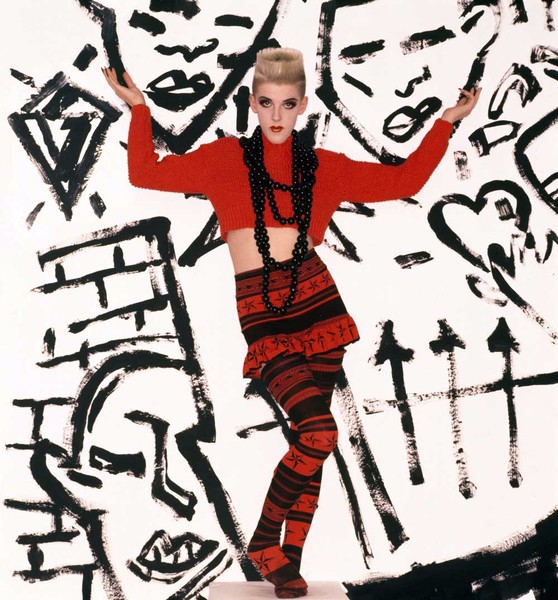Based on his new book ‘The Eighties: One Day, One Decade’, Dylan Jones presents that period’s culture and music through the prism of that one seminal event in July 1985 that united the globe – Live Aid. Wearing a polo shirt and bomber jacket, the young Dylan only had one idea in mind when he woke up on that glorious morning: Setting off from Brixton to Wembley to stand united in the sun with 72’000 others for perhaps ten hours, as an estimated worldwide audience of 1.9 billion watched dual concerts in London and Philadelphia on television. What brought the current editor of GQ magazine there?
Arranged by the V&A Membership and in the context of the current exhibition ‘Club to Catwalk: London Fashion in the 1980s’, showcasing the style movements on parade in London throughout that seismic decade, Dylan held his talk in the V&As magnificent Lydia and Manfred Gorvy Lecture Theatre last week. Expecting a more general discussion on London during that time, Dylan surprised me by focusing on that one event which for him delineates the essence of that time: Live Aid London. At the time when 24 hour television and the era’s pop music and lifestyle representation led to society becoming more market-driven, a generation of men started to see pictures in magazines reflecting back on them and their aspirations. According to Dylan men’s shopping habits began to mimic those of women and consumerism for its own sake became the only game in town: not only for those who did have money, but even for those without. Tom Wolfe’s maxim ‘If you’ve got it, flaunt it’ was the new rule.
That both concerts were televised worldwide in the middle of the ‘Media Decade’ was an extraordinary feat, yet only the Wembley gig created a real buzz. Some of the artists had no legacy, but others such as Adam Ant used it successfully to promote their new albums. Organised in just twenty weeks, Live Aid defied the odds and set a benchmark, as Dylan states: ‘After Live Aid, everyone wanted to play stadiums’.
He closed his talk by asking: ‘Who would have thought the 2012 Olympics would celebrate The Arctic Monkeys, Dizzee Rascal and cocaine-snorting supermodels. The question remains: What will Brazil do in 2016?’
NoéMie Schwaller








